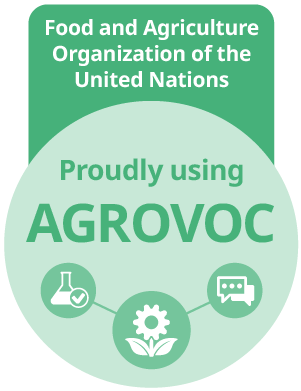Chemical Characterisation of Tamarind Plum Squash
Chemical characterisation of tamarind plum squash
DOI:
https://doi.org/10.54393/df.v3i1.49Keywords:
Storage stability, Functional drink, Tamarind Plum Quality CharacterisationAbstract
Tamarind plum containing red flesh when peeled is very intriguing fruit due to its high content of bioactive compounds, such as the anthocyanins and other polyphenolic compounds with a high antioxidant capacity. These natural substances found in plum acts to prevent diseases, including diabetes and cancer. Objective: In this study squash was prepared with tamarind plum to evaluate the quality and shelf-life extension of the fruit at different concentrations. Methods: The tamarind plum was used to prepare squash with different percentages of tamarind juice and plum juice but at same percentages of sugar, water, and sodium benzoic acid. Prepared squash was filled in polyethylene terephthalate bottles and analysed after 0, 15, 30, 45, 60, 75, and 90 days of storage. The tamarind plum squash was subjected to total phenolic compounds, pH, TSS, Titratable acidity, reducing and non-reducing sugar, and sugar acid ratio. Result: Maximum TSS (49.54), ascorbic acid (33.46), pH (2.29), titratable acidity (2.11), reducing sugar (24.29), and non-reducing sugar (37.64) was observed in squash prepared using tamarind juice (350ml), plum juice (400), sodium benzoic acid, sugar and water (2g, 1kg and 250ml). Storage showed significant effect on reducing sugar and non-reducing sugar, ascorbic acid, pH and titratable acidity during nineteen-day storage. Conclusion: On the basis of above results it was concluded that sample TPS3 show best in keeping quality during storage time intervals. Hence, the results of sample TPS3 of tamarind plum blended squash is more recommended in terms of commercial use and for large scale industrial production. Squash prepared from tamarind and plum are more acceptable to consumers because of sour test, need commercialisation.
References
Khan I, Rehman AU, Khan SH, Qazi IM, Arsalan Khan SF, Rehman TU. Development and Quality Evaluation of Tamarind Plum Blended Squash During Storage. J Food Process Technol. 2017; 8(662):2. DOI: 10.4172/2157-7110.1000662
Hassan SM. Production and quality evaluation of vinegar from tamarind (Tamarindus indica L.) fruit pulp (Doctoral dissertation, University of Gezira). 2014.
Aengwanich W, Suttajit M. Effect of polyphenols extracted from Tamarind (Tamarindus indica L.) seed coat on physiological changes, heterophil/lymphocyte ratio, oxidative stress and body weight of broilers (Gallus domesticus) under chronic heat stress. Animal science journal. 2010 Apr; 81(2):264-70. doi.org/10.1111/j.1740-0929.2009.00736.x
Silva FM, Leite MF, Spadaro AC, Uyemura SA, Maistro EL. Assessment of the potential genotoxic risk of medicinal Tamarindus indica fruit pulp extract using in vivo assays. Genetics and Molecular Research. 2009 Sep; 8(3):1085-1092. doi: 10.4238/vol8-3gmr630.
El-Siddig K. Tamarind: Tamarindus Indica L. Crops for the Future; 2006.
Obulesu M, Bhattacharya S. Color changes of tamarind (Tamarindus indica L.) pulp during fruit development, ripening, and storage. International Journal of Food Properties. 2011 Mar; 14(3):538-49. doi.org/10.1080/10942910903262129
Muzaffar K, Kumar P. Parameter optimization for spray drying of tamarind pulp using response surface methodology. Powder Technology. 2015 Jul 1;279:179-84. doi.org/10.1016/j.powtec.2015.04.010
Pattar AS. Studies on Extraction of Tamarind Pulp and Value Addition. Doctoral Dissertation, University of horticulture Sciences, Bagalkot. 2012 Feb.
Cantin CM, Moreno MA, Gogorcena Y. Evaluation of the antioxidant capacity, phenolic compounds, and vitamin C content of different peach and nectarine [Prunus persica (L.) Batsch] breeding progenies. Journal of agricultural and food chemistry. 2009 Jun; 57(11):4586-92. https://doi.org/10.1021/jf900385a
Rajauria G, editor. Fruit juices: Extraction, composition, quality and analysis. Academic press; 2017 Nov.
Kregiel D. Health safety of soft drinks: contents, containers, and microorganisms. BioMed research international. 2015 Jan; 2015. doi.org/10.1155/2015/128697
Snowden AL. Post-harvest diseases and disorders of fruits and vegetables: Volume 1: general introduction and fruits. CRC Press; 2008 Feb. Doi: 10.1201/b18214.
Anurag S, Pragati K, Ashutosh U. Bael (Aegle marmelos Correa) products processing: A review. African journal of food science. 2014 May; 8(5):204-15. Doi: 10.5897/AJFS2013.1119.
Larmond E. Laboratory methods for sensory evaluation of food. Publication 1637. Canada Department of Agriculture, Ottawa. 1977.
Harborne JB. Methods in plant biochemistry. Volume 1. Plant phenolics. Academic Press Ltd.; 1989.
Horwitz W, Latimer G. AOAC-Association of official analytical chemists. Official Methods of Analysis of AOAC International 18th edition, Gaithersburg, Maryland, USA. 2005; 45:75-6.
Barbosa-Cánovas GV. Handling and preservation of fruits and vegetables by combined methods for rural areas: technical manual. Food & Agriculture Org.; 2003.
Chang TS, Siddiq M, Sinha NK, Cash JN. Plum juice quality affected by enzyme treatment and fining. Journal of Food Science. 1994 Sep; 59(5):1065-9. Doi: 10.1111/j.1365-2621.1994.tb08191.x.
Omer HA. The Potential of Tamarind (Tamarindusindica L.) Kernels as a Substitute Source of Pectic Substances. Doctoral dissertation, UOFK.
Davis RH. Aloe vera: A scientific approach. Vantage Press; 1997
Downloads
Published
Issue
Section
License
Copyright (c) 2022 DIET FACTOR (Journal of Nutritional & Food Sciences)

This work is licensed under a Creative Commons Attribution 4.0 International License.
This is an open-access journal and all the published articles / items are distributed under the terms of the Creative Commons Attribution License, which permits unrestricted use, distribution, and reproduction in any medium, provided the original author and source are credited. For comments









